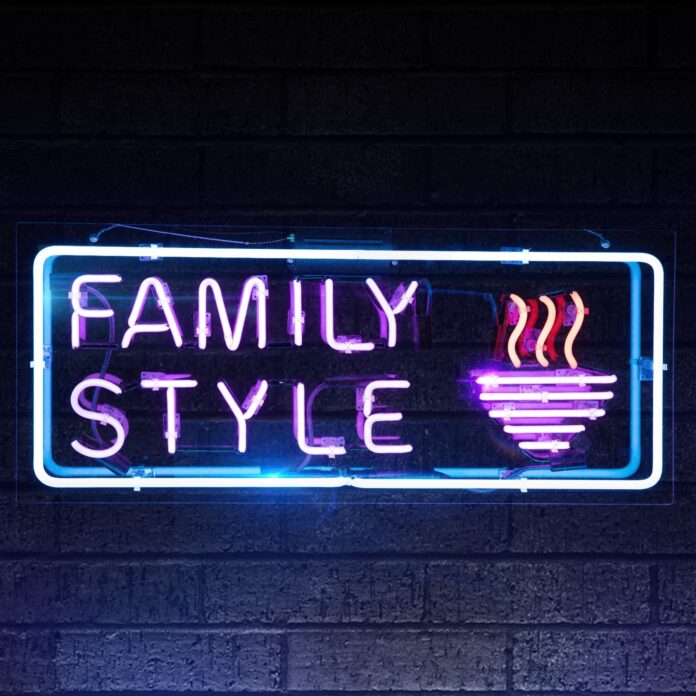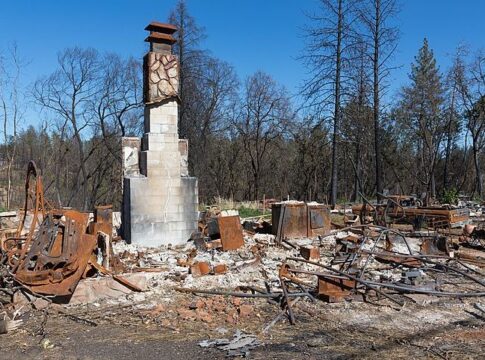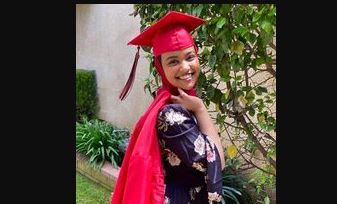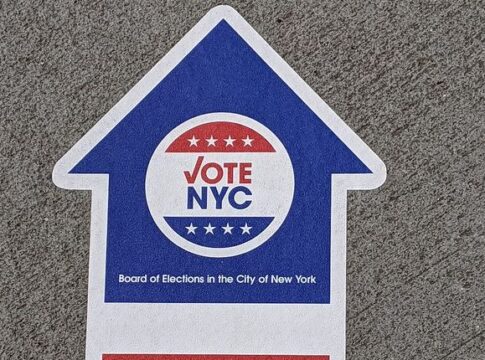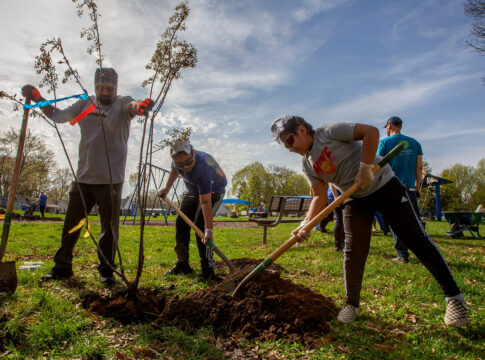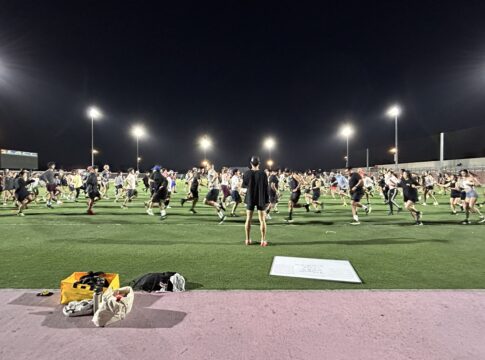By Jana Monji
If you live to eat and consider yourself a foodie, check out Stage 13’s new series, Family Style. Shot in places as familiar as Los Angeles and distant as Vietnam, this original 12-episode unscripted series premiered on May 13 and provides an informal approach to Asian food, history and culture, China and the Philippines and includes guest appearances from Daniel Dae Kim, Dianne Doan, Hudson Yang, Harry Shum Jr. and Jon M. Chu. The show is streaming on Stage13.com, Youtube, and Facebook Watch.
The episodes run from 10 to 15 minutes and sometimes include animation. The first episode featured Daniel Dae Kim getting cooking lessons in Hawaii and Fresh Off the Boat actor Hudson Yang and his CNN journalist father Jeff Yang talking about Taiwanese culture.
The titular family is the Foodie Fam–eight friends who love to bond over food. Their faces might be familiar and include contributing editor at Harper’s Bazaar and founder of Eurasian Vogue blog Stacy Fan; actress/singer/producer Lana McKissack (Shameless, Criminal Minds, Transformers: Titans Return), actor/comedian Gilbert Galon, actress Amanda Suk (Runaways), actor/filmmaker/musician Arvin Lee, actor/writer/filmmaker Anthony Ma (Dear White People, NCIS: Los Angeles) and writer/director Oates Wu and actress/model/screenwriter Sujata Day (Insecure).
Family Style is produced by YOMYOMF, a YouTube channel that features Asian American pop culture. One of the show’s three executive producers is Korean American playwright Philip W. Chung. He has written for shows like ABC’s Lois & Clark: The New Adventures and is known in the Los Angeles area as one of the founding members of the Lodestone Theatre Ensemble (1999-2009). Chung spoke with AsAmNews about the creative process behind Family Style.
LATEST STORIES
“I always wanted to do something around Asian food, stories in that world that felt a bit more casual, like you’re hanging out with friends, having a meal,” Chung said.
Chung pitched Family Style to Warner Bros. Digital Networks when they began their new short-form digital content brand Stage 13, Family Style. Eventually, Chung produced a pilot of the show. That was a year and a half ago and from there Chung says things “move[d] pretty quickly.” The team was off to the races with the support of Shari Scorca, VP of Unscripted Development at Stage 13.
“When YOMYOMF presented us the concept of celebrating Asian food and pop culture from the perspective of a diverse, all Asian cast, with Asian filmmakers, we were excited to start filming,” Scorca said in a press release.
The show had a special sneak peek and panel during the Los Angeles Asian Pacific Film Festival at the Japanese American National Museum in Little Tokyo where three episodes were screened and a panel discussion followed.
“I personally have a long history with them (LAAPFF),” Chung said. “I’ve done something there every year for the past 4-5 years. It’s a place that feels like home. To bring the show about food and family and friends was great. It was the first time any of us had seen the episodes in front of a real audience. Asian Americans are really into food and we had a good idea of how people would react to it.”
Chung fondly recalled how the audience gasped during one episode when an ube paste was introduced.
“It reminds you that even the sight of food and something that is kind of different can elicit a reaction,” Chung said.
While Chung didn’t grow up watching food-related TV programs, he did like the series with the late Anthony Bourdain because he would “go into cultures and be respectful.” Chung’s show isn’t about the input of experts like Bourdain. It’s about learning from friends and people’s personal experiences with food.
Throughout his life, Chung learned about food from his own friends and their families. He remembers when an Indian American friend of his introduced him to naan for the first time.
“Dipping the naan in curry was a thing I became obsessed with,” Chung said. “His mother explained to me how she used to be with her mother in India.”
Chung also noted there’s a generation difference with attitude toward food.
“Younger Korean Americans now; they have no issue in bringing kimchee to school.”
Yet he remembers, growing up in a predominately white neighborhood, living in two separate food worlds. Unlike young Korean Americans today, Chung grew up during a time when “no one knew what Korean barbeque was.”
“When I went to school, I ate the hamburgers, pizza and stuff,” Chung said. “When I came home, I ate kimchee and rice.”
Eventually, Chung’s two worlds would merge.
“Initially when I brought White friends back to my place and we would look for food to snack on, I thought, ‘I’m not going to offer up that’ even if he would love to have hotdogs with kimchee.”
That changed when one day he had a couple of his friends over and they asked about that big jar in the refrigerator. He hesitated, not really wanting to explain kimchee. Although he thought they wouldn’t like it, his friends said they wanted to try it. In the last episode of the series, director Jon M. Chu shares a similar experience.
Many of the restaurants featured in the show are located in larger cities like Los Angeles. However, the show has also managed to find hidden gems in remote locations. Chung remembered filming at a restaurant in Idaho that was owned by an older White couple. The restaurant was located in a small lodge by a river. There was no wifi or cellphone signal. They were surprised to find kimchee on the menu. It turned out the couple used to live in San Francisco. When they retired in Idaho, they had a lot of people ask for spicy food. They decided to get kimchee shipped out.
Most of Chung’s work is done by the time an episode begins filming. However, being a foodie is about eating, so he likes to be on the set when he can. Staying on set also comes with its rewards. At Sushi Ono, one of the restaurants where they were filming, the cast and crew were treated to huge platters of sushi.
“You want to be on the set,” Chung said. “It’s the best part of the job.”
Not all restaurants have welcomed the show.
“One story we wanted to do was eating live seafood,” Chung said. “One place a colleague was confident we could get but they were totally violently opposed to us.”
The restaurant was so opposed to the idea that they “chased him out of the restaurant.”
Family Style will be releasing new episodes on Mondays and Thursdays through the week of June 17.
Akemi Tamanaha, associate editor, contributed to this article.
AsAmNews has Asian America in its heart. We’re an all-volunteer effort of dedicated staff and interns. Check out our Twitter feed and Facebook page for more content. Please consider interning, joining our staff or submitting a story.


